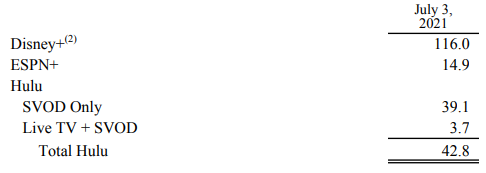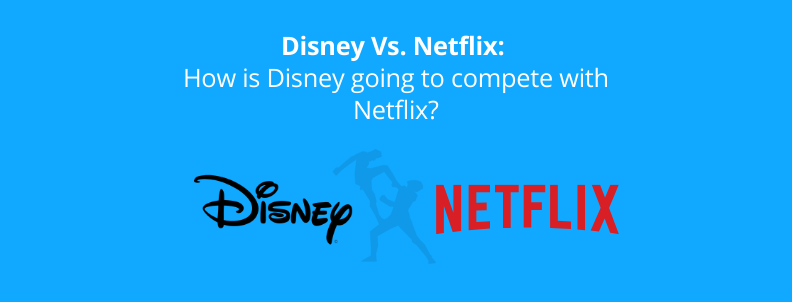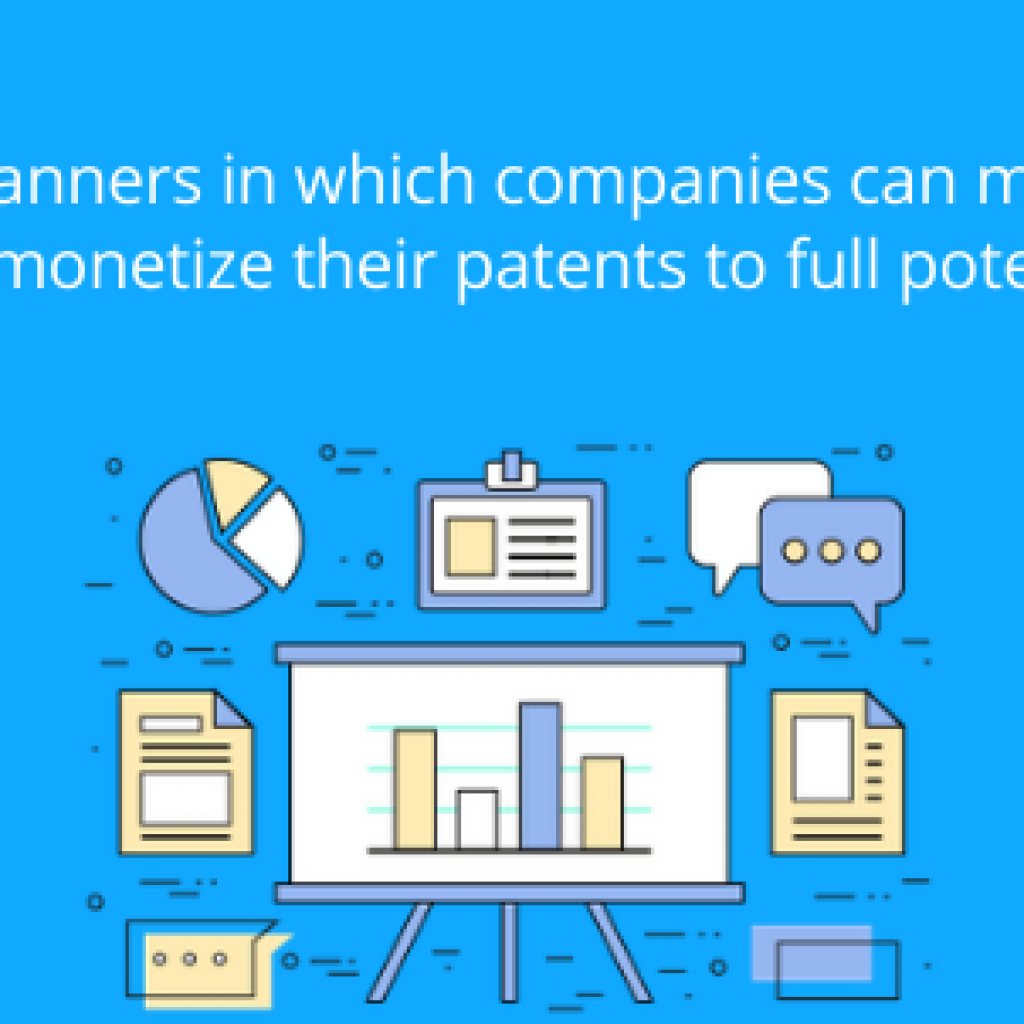If you were to stop a random person on street and ask them if they have heard about Disney and Netflix, chances are they would nod in affirmative. The former is an almost century-old brand whose films and shows we have grown up watching, whereas the latter has become the go-to place for entertainment if you ever overcome the endless scrolling the platform offers.
Both the companies have become two of the biggest contenders for viewers’ attention. So when it comes to streaming wars, who would emerge as the winner?
Netflix has been one of the primary players in streaming, whereas Disney+ – with its huge repository of content – has been moving ahead with full force, proving as a real competitor to Netflix. The question that now arises is — How long before Disney overtakes Netflix, if that ever happens?
We had been digging deep and found that Disney still has to overcome a multitude of challenges before it competes with Netflix on an equal level. What are those challenges and how is Disney planning to compete with Netflix?
We have tried to answer all these questions in the remaining article. We’ll be looking at the different aspects of the competition, the role of patents and acquisitions, and what it means for future competition between these two companies. That’s not all. As we reach the end we’ll also discuss why this competition matters and analyze where both companies could go from here. This is going to be quite a reveal. But before we get started on Disney Vs. Netflix, let’s have a quick look at Netflix and what the streaming giant has been up to garner viewers’ attention.
Netflix, a revolutionary streaming media service
One of the main growth factors in streaming services is user experience and so far Netflix is the only platform that has focused on the user experience as much as on building their content library. Precisely in terms of content, streaming quality, better recommendations, UI, and many new features such as Fast Laughs.
Netflix not only spends money on content but also researches technologies to provide the best streaming services. Its recommendation system is considered one of the best in the industry.
The success of its system can be measured from the fact that more than 80% of the TV shows and movies that are played on Netflix are discovered through the platform’s recommendation system.
In 2016, Netflix said that its recommendation engine is worth $1 billion per year. And the engine has improved a lot since then. The company also very smartly secured its content recommendation technology by filing enough patents around it. The graph below highlights the technology-wise patent portfolio distribution of Netflix.

Source: Insights;Gate by GreyB
Netflix has also filed many patents in streaming, including US8386621B2 which is on “parallel streaming” i.e. simultaneously streaming a video across multiple devices or connections. This is one of the top-cited patents of Netflix.
Speaking of IP, companies like Google, IBM, and Microsoft are the top companies that are using Netflix’s technologies to advance their research. Moreover, upon digging, we found that Netflix is responsible for the rejections of many patent applications filed in media streaming, content recommendation, etc.
That means, companies are filing patents in these technology areas but since Netflix already owns patents on these technology areas, their patent applications got blocked or rejected.
 Source: Insights;Gate by GreyB
Source: Insights;Gate by GreyB
The above chart tells the technologies in which other companies’ patents got blocked by Netflix patents because they own the same technologies or quite similar to that.
Netflix is the first platform that kickstarted streaming movies and TV shows so, it is clear that it has patented technologies related to media streaming which other companies wanted to patent but got rejected. The same stands true for other technologies too.
“Netflix is the 3rd largest media company of 2020 “
-Forbes Global 2000 List.
It is clear that in streaming and content recommendation technologies, Netflix is undeniably ahead of any other streaming service providers. This leads us to question –
What is Disney doing in this streaming war?
Disney is quickly catching up to Netflix at a rate that shocked even Disney. Disney set a target of 90 million subscribers by 2024 and by the end of 2020, they already had 94 million subscribers.
“What we didn’t realize was the non-family appeal that a service like Disney Plus would have,” Chapek said at the Morgan Stanley Technology, Media, and Telecommunications Conference. “In fact, over 50% of our global marketplace [subscribers] don’t have kids, and that is a big difference.“
Disney’s first foray into streaming is the new Disney+. As of July 3, 2021, Disney+ has 116 million subscribers. If combined with Hulu and ESPN+ subscribers, it would make a total of 173.7 million subscribers compare to Netflix’s 209 million subscribers.
 Though Disney doesn’t have the most subscribers yet, the growth rate could eventually make Disney surpass Netflix in the coming 2 to 3 years.
Though Disney doesn’t have the most subscribers yet, the growth rate could eventually make Disney surpass Netflix in the coming 2 to 3 years.
It is also true that beating Netflix would be a tough nut to crack. Disney surely saw unexpected growth in subscribers in its first year, but it would not be easy to maintain the same pace for a long time. Especially when other streaming platforms pop up such as HBO Max, Apple TV+, Paramount+, Peacock, etc.
The question that arises now is – What does Disney possess in its arsenal to rival Netflix in so-called streaming wars?
Let’s find out.
Disney Content Library
Disney has one of the largest content libraries. Being an almost century-old company, Disney has enough content to create the largest content library including some of the highest-grossing media franchises.
While Disney already has its own media franchise such as Mickey Mouse & Friends, Winnie the Pooh, and Disney Princess, the company has been doing billion-dollar acquisitions to add more to its portfolio.
Since 1993, Disney has spent more than $100 billion on purchasing media companies and franchises. Let’s look at Disney’s acquisition strategy.
Disney Content Acquisition Streaks
Disney has made several purchases including media houses, studios, characters IP, cable networks, broadcasting networks, etc. These acquisitions helped Disney become one of the largest media powerhouses and accumulate enough content to rival Netflix in the streaming wars.
Below mentioned are some Disney acquisitions that are helping Disney to grow its streaming business.
Acquisition of Capital Cities/ABC/ESPN
Disney saw its first billion-dollar acquisition in 1995 when it acquired Capital Cities/ABC Inc, a media company, for $19 billion.
With this acquisition, Disney acquired the rights to several networks such as ABC network, an 80% stake in ESPN, a joint-stake in Lifetime Entertainment Services, a minority stake in A&E Television Networks, and a limited partnership stake in DIC Entertainment, now known as Walt Disney Television.
The acquisition brought what Disney missed for a long time and now could become the main factor to tackle Netflix, i.e. Live content, sports. And even today ESPN is proving a gold mine for Disney with ESPN-related cable networks and the streaming platform, ESPN+. It is a go-to place for sports fanatics.
Further, ABC is one of the cable networks responsible for the growth of Disney network revenue income. In fact, in Q2 2021, Domestic Channels including ABC’s operating income increased by 12% when compared to Q2 2020.

Fox Family Worldwide Acquisition
Fox was facing a decline in viewerships and the situation became worse when they changed its name to The Family Channel. Unable to keep up, Fox Family was sold to Disney for $5.3 billion in 2001.
Analysts also thought that this acquisition was influenced by the AOL and Time Warner Merger that also happened in 2001.
With this acquisition, Disney had a reach of 81 million homes, making it Disney’s second most-viewed cable station at that time, and giving it a strong cable platform for its broadcast and other family-oriented content.
Disney’s then-CEO Michael Eisner said it is nearly impossible to build or buy a network with Fox Family’s reach today.
“These assets are a perfect fit for our company,” said Eisner. “We paid appropriately for a rare asset.“
The network was renamed ABC Family, and its parent company was renamed ABC Family Worldwide. The network again was rebranded as Freeform in 2016.
The Muppets Acquisition
In 2004, Disney bought the right for The Muppets for $75 million and created a division called The Muppet Studio. The Muppets are puppet-like characters made by Jim Henson in 1955.
The Muppets took their time but eventually got recognition when they started appearing on Sesame Street. But it was The Muppet Show (1976-1981) that delivered them international recognition along with 4 Primetime Emmy Awards.
Further, Disney released two muppet movies and a short primetime series after the acquisition, and currently, a show (Muppets Now) is going on Disney+.
Pixar Acquisition
Disney made another multi-billion dollar acquisition by acquiring Pixar for $7.4 billion in 2005. Pixar was then already making its name in the industry with the release of animated movies like Toy Story and A Bug’s Life.
Pixar was the first acquisition by Bob Iger as CEO and it was an expensive one. Disney Animation Studio was not working well and Disney had a joint venture with Pixar to co-produce Pixar’s films. Upon a disagreement issue regarding distribution rights, both companies were ready to end the deal. Iger saw that Disney Animation “needed a huge improvement,” as quoted in the Bloomberg interview.
“I thought the fastest way to accomplish that, albeit at the riskiest and the most expensive, was to buy Pixar.”
For that Iger had to convince Steve Jobs and how he did it makes a really interesting read. I would suggest you read this CNBC article next once you’re done reading this piece. Click here to open the CNBC piece.
Post-acquisition, Steve Jobs became a member of Disney’s board and the company’s largest shareholder.
Pixar was a huge success for Disney, especially for its animation Studio. Pixar has released almost 17 movies after the acquisition, and most of these movies performed well at the box office. In the list of top 10 highest-grossing animated movies ever, 4 movies were developed by Pixar. Pixar further helped improve Disney Animation Studio, producing movies like Frozen, Frozen 2, and Zootopia. All 3 movies are also in the top 10 list.
In 2020, when the theaters were closed due to Covid-19, Disney released the Pixar-produced movie Soul on Disney+.
Miramax Acquisition
Disney started acquisition for content with Miramax Films in 1993 for $60 million which paved the way for Disney to enter the independent film market. But despite Disney being the parent company, Miramax’s founder ran the company independently till they retired in 2005.
However, Disney had the right to choose which film they wanted to release. The company produced some award-winning movies such as Good Will Hunting, Pulp Fiction, No Country For Old Men, etc.
After its founder’s departure, Miramax staff was reduced by 70% and the number of releases got reduced to 3 in a year. On October 30, 2009, Disney announced the resignation of Daniel Battsek as President of Miramax Films.
The Miramax brand was less of a priority for Disney CEO Bob Iger who wanted to focus on Disney’s branded entertainment that can be made useful in its theme parks, television, and its Merchandise.
So, in July 2010, Disney sold Miramax to a group of private equity investors for $660 million.
Marvel Acquisition
Disney acquired Marvel in 2009 and with it, Disney got the right to Marvel’s 5000+ characters. Marvel’s acquisition has been a huge success for Disney. Under Disney Studio, Marvel has released 16 movies (out of a total of 23).
Marvel is one of the top 10 media franchises with an estimated total revenue of $35 billion.
After the release of Disney+, Marvel planned to move the story ahead in the form of TV series. In January 2021, Marvel released Wandavision, its first TV series as a Disney+ Original, to commence its Phase 4.
Marvel has also planned to release 6 Disney+ Original series in 2021 alone along with 4 movies. Given the popularity of the series, it will surely be a game-changer for Disney+.
LucasFilm Acquisition
Disney’s acquisition strategy perhaps revolves around owning media franchises most loved by people. LucasFilm’s acquisition in 2012 got Disney access to franchises like Star Wars and Indiana Jones.
Star Wars is a classic and successful franchise even before being acquired by Disney. It is the fifth highest-grossing media franchise of all time with an estimated revenue of $68.7 billion. But unlike Marvel, Merchandise sales is the top segment of generated revenue with $42.21 billion.
Moreover, Star Wars movies and series are also a huge success in terms of popularity and revenue.
- Star Wars: The Force Awakens was the 3rd movie to gross more than $2 billion in the box office.
- Star Wars’ “The Mandalorian” is the first original Disney+ series released for the platform. The series became an instant success prompting Disney to release the second season within a year.
In the future, Disney has planned to release 7 more Star Wars live-action series and 2 animated series for its platform.
21st Century Fox
This is one of the biggest acquisitions of all time with costing Disney $71.3 billion. Before the release of Disney+, the company wanted to bulk up its content library.
With this acquisition, Disney owns 20th Century Fox film and TV studio, U.S. cable/satellite channels such as FX, Fox Networks Group, a 73% stake in National Geographic Partners, Indian television broadcaster Star India, and a 30% stake in Hulu.
This acquisition in a way helped Disney with three different streaming platforms, i.e. content for Disney+, ownership of Hotstar – a streaming platform for India – and increases in stakes from 30% to 60% in Hulu.
Later in October of 2019, AT&T sold its 9.5% Hulu share for $1.43 billion and Comcast also agreed to sell its remaining 33% stake to Disney by 2024 and became a silent partner till then. Hulu, thus, became a subsidiary of Disney.
Further, by acquiring Fox media, it reserved the rights for more Marvel characters such as X-Men, Deadpool, Fantastic Four, etc. Disney could utilize these characters to make the MCU franchise bigger than ever.
Moreover, Fox networks such as FX, FXX produce TV series for 18+ audiences which is suitable for Hulu.
In November 2019, it was announced that FX will produce series for Hulu under the brand name ‘FX on Hulu’. Four series previously in development for the linear FX channel premiered on Hulu, including Devs, Mrs. America, A Teacher, and The Old Man.
Furthermore, episodes aired on the FX channel will be available on ‘FX on Hulu’ the next day. ‘FX on Hulu’ was launched on March 2, 2020.
Disney Technological Advancements
Disney has been in research for a very long time. The company first launched its R&D arm, Walt Disney Imagineering, in 1952, to design its theme parks, i.e. Disneyland.
Though its initial R&D was focused on taking the movies to next level and how to immerse their users with the content through offline experience, Disney has now realized that people now spend more time on the Internet. They immediately started focusing on their online delivery experience and formed – Disney Research on August 11, 2008.
The lab work on three main technologies –
- Robotics,
- AI and ML, and
- Immersive Technology
They also cover other technologies like computer graphics, displays, human interaction videos, wireless communications, etc. The technological distribution of Disney’s patent portfolio below can help draw a clear picture.
 Source: Insights;Gate by GreyB
Source: Insights;Gate by GreyB
The above chart includes the patents owned by Disney’s subsidiaries including Pixar, Hulu, Fox, Lucasfilm, Marvel, etc. It is also worth noting that the second and third tech segments, i.e. Media streaming and User Profile and Data Processing are directly related to streaming platforms.
Also, if you see the filing trends, you can see that Disney has been actively working on streaming technologies in the years 2015 to 2018.
 Source: Insights; Gate by GreyB
Source: Insights; Gate by GreyB
In 2017, Disney, including its subsidiaries, filed most media streaming and user profile patents.
Disney’s increased interest in R&D in Media streaming as indicated by its high patent filing in the domain could be the reason behind Disney’s acquisition of BamTech in 2017.
BamTech was a streaming service provider for streaming platforms like HBO NOW, the National Hockey League, the PGA Tour, the WWE Network, and others. In 2016, Disney purchased 33% stakes of the company for $1 billion, and then for majority ownership, it purchased 42% more stakes for $1.58 billion in 2017.
A year after the acquisition, Disney launched its first sport-oriented streaming service ESPN+ in 2018 and then entertainment streaming service Disney+ in 2019.
In Oct 2018, Disney changed its name to Disney Streaming Services.
Onto the financial comparison of Disney and Netflix
When compared from the technological and number of subscribers aspect, Netflix is way ahead in the lead. Netflix has the best machine learning recommendation system that makes its platform one of its kind. It also has the best UI and UX among all the streaming platforms.
Netflix doesn’t hesitate to spend billions on content either. In 2021, Netflix set a budget of $17 billion for content – this is almost double the amount that Netflix spent in 2017, i.e. $8.9 billion. As of June 3, 2021, Netflix has 2276 Originals in its library.
Besides content, Netflix spent $1.8 billion in R&D activity in 2020, an 18% increase from 2019.
In 2020, Netflix had revenue of $25 billion and as of July 9, 2021, has a market cap of $237.6 Billion. In 2019, Netflix held a $12.43 billion debt and is still paying it off. Industry analysts took it as a bad sign for Netflix but some are fine with the debt.
Coming on to Disney, which lacks in terms of technological advancement and subscribers that Netflix holds for now. However, Disney is a bigger company than Netflix in terms of revenue, assets, and content library.
In 2020, Disney’s revenue was $65 billion with a market cap of $320 billion. Disney generated most of its revenue from cable networks & broadcasting segments, theme parks, and merchandise sales, unlike Netflix that depends only on subscriber growth.
Disney’s streaming platforms are responsible for $16.9 billion of the total revenue. As of the Original content budget, Disney set a target to spend $14 to $16 billion by 2024. The amount is less than Netflix but we can’t ignore the content budget for Disney’s Networks, Movies produced by Disney for theatrical release, etc.
Moreover, the number of Disney+ Original Titles is less than Netflix but we can’t ignore the fact that Disney has been producing content since 1923.
Disney produced over 750+ movies under its banner. And then there is the content of acquired media houses. And that is a long… long list of content.
The comparison below shows that Netflix is in the lead but how long will it be able to maintain its stature would be interesting to see.
| Segment | Netflix | Disney |
| No. of Subscribers (July 2021) | 209 Million | 173 Million |
| Total Revenue (2020) | $25 Billion | $65 Billion |
| Revenue from Streaming (2020) | $24.7 Billion | $16.9 Billion |
| Market Cap (July 2021) | $225 Billion | $325 Billion |
| No. Original Titles | 2276+ | 70+ (Disney+)
100+ (Hulu) |
Disney has enough resources and money to give a tough competition to Netflix. One of them is a sport-oriented platform, i.e. ESPN+. While Disney has a full-fledged sports streaming service, Netflix lacks in this area completely.
Most people around the world are far too interested in sports than other entertainment sources. And this is something Disney has taken full advantage of. NFL, NFC, and UFC are sports championships that are popular in America.
Then there are national sports events such as IPL, Indian Premier League, in India with nationwide popularity. Disney+ Hotstar is the only streaming platform that provides live viewership of IPL in India and it is one of the reasons people purchase the subscription.
Further, Disney has the rights to Live streaming for international tournaments such as Cricket World Cup, ICC Champions Trophy, T20 Cricket World Cup, etc.
Future Outlook
Disney had a great start in the streaming industry and till now, things have been great for Disney. They achieved the goal in just 13 months which they had set to achieve in 5 years.
Covid-19 not only helped Disney+ but also Netflix to achieve tremendous growth in user subscriptions.
Theatres were closed during the lockdown period so Disney had to push the release date of its two movies, i.e. Mulan and Black Widow. Eventually, Disney decided to provide Premier Access for Mulan in Disney+ by asking for an additional fee of $30 and was estimated to collect $33.5 million in its first weekend.
And since there is no third-party involvement such as theaters, Disney doesn’t have to split the revenue. Further, according to app download research firm Sensor Tower, Mulan drove an increase of 68% in new downloads of Disney+ from Sep 4 through Sep 6.
The metrics seem good, but was it beneficial for Disney since the movie budget was $200 million? Perhaps not.
Releasing the movie was a necessity for Disney rather than a strategy. That’s why, Disney has been delaying the release of its much-anticipated movie, Black Widow (Budget – 200+ Million). But after delaying for more than a year, Disney finally released the movie on Disney+ via Premier Access on July 9, 2021.
In the past, Disney saw a growth of 8 million subscribers in the 2 months when Marvel’s first TV series, Wandavision, got released in Jan 2021. It would be interesting to see how many more subscribers these movie releases would fetch for Disney+.
Then there is also Live-stream content such as major sports events that Disney can provide through ESPN+ while Netflix doesn’t have any Live-stream content to provide.
Despite all that, Netflix still doesn’t think Disney+ is its biggest competitor. As per its CEO, Reed Hastings, traditional TV remains Netflix’s biggest competition, followed by YouTube. There are still more than 800 million people, outside China, paying for regular TV and as per Netflix, that is the market that it needs to capture. So, even with Disney+, Apple TV+, and HBO MAX joining the war, there is still enough market to capture for Netflix.
The streaming war has taken a furious mode as just in the last few months the streaming industry has seen two major M&As, i.e. WarnerMedia and Discovery Merger, and Amazon acquisition of MGM.
So, who do you think things will turn out for b/w Disney and Netflix, or can someone else swoop in and take the reigns of media streaming? Comment below and let us know your thoughts.
Authored by: Vipin Singh, Senior Researcher, Market Research.









